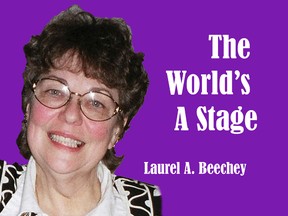A lovely Saturday with 154 men

Article content
I spent all day Saturday with 154 men!
I didn’t know any of them in the beginning, but after a few hours I realized how much meeting them was affecting me. Most of these men were young, probably late teens and in their twenties. There were a few older guys, whose presence added an air of maturity and calmness to the group as a whole. They had very little in common: some were still students in school and actually lied to get in with the group and others like William Thomas was 45 years old. Although William wasn’t one of the men in charge of the group he could be the man the boys might gravitate to as he had warmth about him. Although not smiling when I saw him, I could easily see his mustached smile breaking across his face. To me he seemed a father figure.
It was not a happy occasion, so the mood of some, especially the older men was more sombre. But the younger men, you could see the glint in their eye, they knew they were going on a big adventure.
There was a cocky tilt to their caps and a hint of a smile on their lips. But Fred and George, the two Stroud brothers, their eyes told a different story. It think the reality of their actions had hit them, they knew their lives would never be the same again. They looked sad, perhaps lost. I hoped that they stayed close to William.
They all had only one thing in common, they had all enlisted in Oxford’s 168th Battalion, and consequently had their pictures taken in 1916. This Battalion recruited men from Oxford County, including Tillsonburg, the winter of 1915-16. They sailed to England in November 1916. The battalion was absorbed into the 4th and 6th Reserve Battalions on January 4, 1917.
I spent the day taking each man’s photo from one large group photo, separating it, cleaning it up a bit and then adding their name to their new individual photos. It was one of those assignments which can be very repetitious and rather brain numbing, unless you pay attention to the faces.
Some of the boys look like they are 16 years old. One such face is that of Lawrence Floyd Ward who is noted to be 18 on his attestation papers but turns out to be only 17. He was not very big at only 5’3”, with a dark complexion, blue eyes and dark hair. He was the son of George Ward of Tillsonburg.
We actually know about Lawrence, for his family has a member in our Pioneer Graveyard. I wonder what he looked like when the war was over. You will be pleased to know that Lawrence survived through the war and ended up living in Detroit.
Here is a name that jumped out at me: Pte. H.B. Ostrander. Yes, he is of the Ostrander family of Ostrander and in fact was named after his grandfather Henry B., who was the first postmaster in Burnville and it was he that changed the village name to Ostrander. The photo of young H.B., when he enlisted shows a 21-year-old man 5’9” tall with dark complexion, blue eyes and black hair. He was the son of William and Gertrude (Pearce) Ostrander and was a farm labourer, living in Ostrander, Ontario.
Henry was killed at the Battle of Fresnoy (France) on May 3rd, 1917. A few days before his death the Canadians took Vimy Ridge, after that landmark occasion many historians do not bother to follow through with subsequent battles. On the day of his death it was written: “On 3 May 1917, the third and final Battle of the Scarpe began.”
After the war, a British military historian wrote that the first day of combat as “a day which many who witnessed it considered it to be the blackest day of the war.”
H.B. Ostrander’s name is on the Vimy Memorial.
Several years ago I did research and a presentation on Nursing Sisters of WWI from the Tillsonburg area. One lady was Tillsonburg’s Winifred Toogood a Nursing Sister who trained in Hamilton Ontario and to get into the war contracted for one year with the Q.A.I.M.N.S.R. (Queen Alexandria Imperial Medical Nursing Service Reserve) and shipped out to England in October, 1916. She served in for Malta eight months and Salonika four months. By the end of her contract, the Canadian Army Medical Corp had been formed and she enlisted in London, England Nov. 27th, 1917 to serve with the Canadians.
Well, who was one of my 154 men, but Winifred’s brother, Wilfred ‘Alex’ who was a schoolteacher when enlisted on Feb. 3rd, 1916. He became a lieutenant, presumable because he had served as an instructor with the school’s Cadet Corps for three years, as well as being a musketry instructor. It was perhaps his letters to his sister which inspired her to join up.
A photo, a name and a cyber trip the Library and Archives of Canada website (http://www.collectionscanada.gc.ca/databases/cef/001042-100.01-e.php?PHPSESSID=gaij4cpltb39ff17jdeukveah1) to find their attestation papers for WWI. That tells you their name, number, age, where they lived, their next of kin and their address and other history. Page two tells you their physical characteristics. It is not enough, we’d like a little more information, but it is a start.
With the 100th Anniversary of WWI starting this July, we will remember the men and women from Tillsonburg who fought for us.